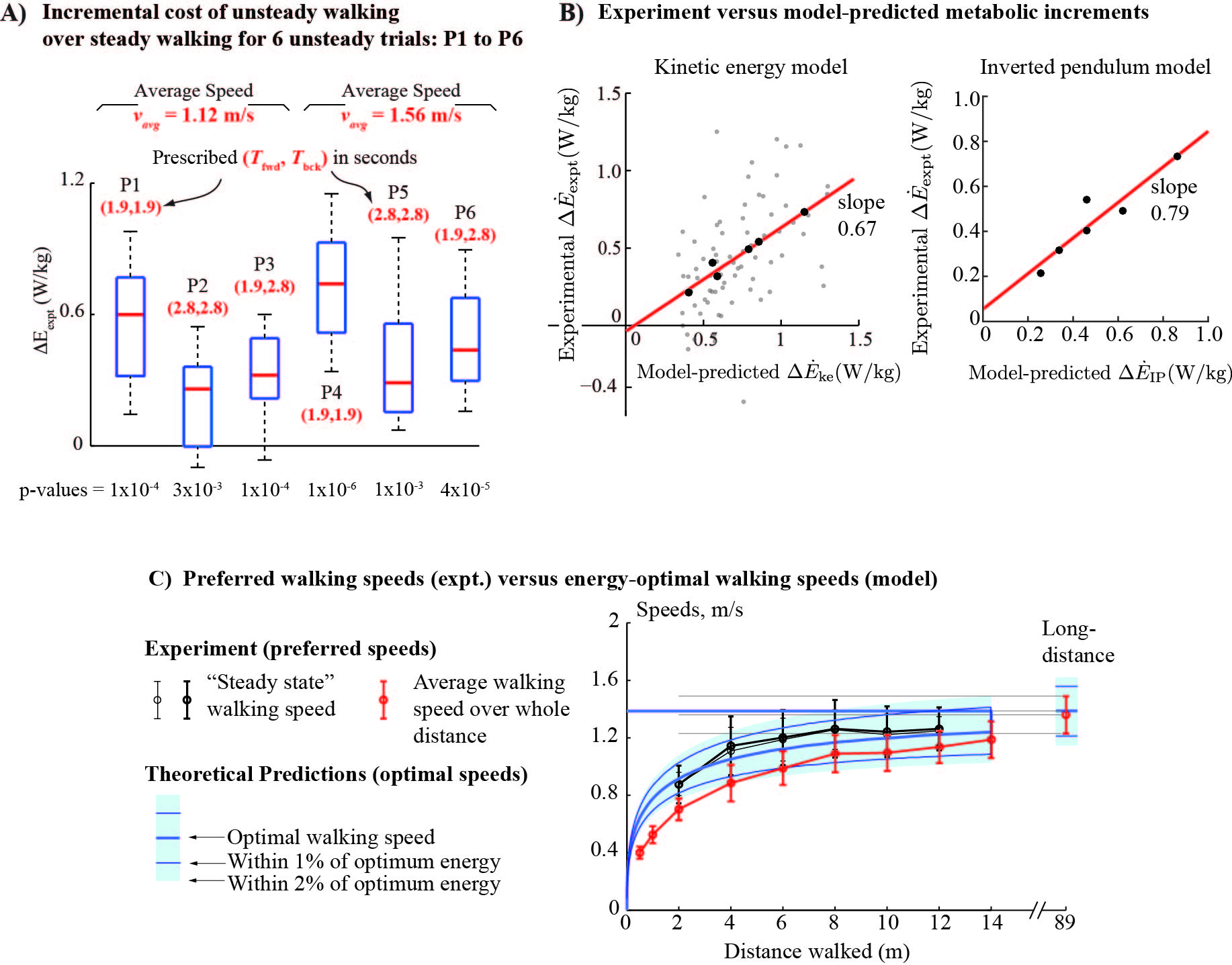Cost of changing walking speeds
and preferred walking speeds for short distances
This webpage supports the following article about people not walking at constant speeds. If you need more information about this article that is not available on this page, please contact Manoj Srinivasan.
Article
Title: The metabolic cost of changing walking speeds
is significant, implies lower optimal speeds for shorter
distances, and increases daily energy budget estimates
Journal citation: Biology
Letters, 11, 20150486, 2015
.
Authors: Nidhi Seethapathi and Manoj
Srinivasan
Article: PDF
+ Supplementary Information.
Data
De-identified human subject data is accessible from
Dryad.
Data citation. Seethapathi N, Srinivasan M (2015) Data
from: The metabolic cost of changing walking speeds is
significant, implies lower optimal speeds for shorter
distances, and increases daily energy estimates. Dryad Data
Repository.
http://dx.doi.org/10.5061/dryad.15v26
Abstract:
Humans do not generally walk at constant speed, except perhaps on a treadmill. Normal walking involves starting, stopping and changing speeds, in addition to roughly steady locomotion. Here, we measure the metabolic energy cost of walking when changing speed. Subjects (healthy adults) walked with oscillating speeds on a constant-speed treadmill, alternating between walking slower and faster than the treadmill belt, moving back and forth in the laboratory frame. The metabolic rate for oscillating-speed walking was significantly higher than that for constant-speed walking (6–20% cost increase for ±0.13–0.27 m s−1 speed fluctuations). The metabolic rate increase was correlated with two models: a model based on kinetic energy fluctuations and an inverted pendulum walking model, optimized for oscillating-speed constraints. The cost of changing speeds may have behavioural implications: we predicted that the energy-optimal walking speed is lower for shorter distances. We measured preferred human walking speeds for different walking distances and found people preferred lower walking speeds for shorter distances as predicted. Further, analysing published daily walking-bout distributions, we estimate that the cost of changing speeds is 4–8% of daily walking energy budget.Here's an example of a person walking with changing speeds on a constant-speed treadmill.
A figure
Here's the key figure with all the results.
Press.
WebMD. For a Better Calorie Burn, Do This While Walking.CBSNews. How to burn more calories while you walk.
Huffington Post. Burn More Calories When You Walk.
Quartz. Burn extra calories every time you walk.
New York Magazine (NY Mag). Article.
Yahoo Health. Article.
Times of India. Article.
The Telegraph (UK). Altering your walking speed burns more calories than a steady pace.
People. Article.
STEAM Register. Fast, Slow, Fast, Slow.
General remarks: for the press, general public, etc.
This paper has attracted considerable press attention recently.
Some of this coverage seems to give the impression that changing walking speed is a
'very effective' way to burn calories. To be clear, we do find that changing walking
speed incessantly (as in the video above) does increase energy expenditure over normal walking.
However, as has been shown by numerous previous studies, there are lots of relatively intuitive ways of burning
more calories in a given amount of time. For instance, just walking faster, running,
walking with leg weights or a backpack, walking on a slope, etc. Changing walking speeds
incessantly is one more way.
Our goal in this research was first to study how much energy was required for this important aspect of the normal
walking, namely changing speeds. We found that there was indeed a measurably significant cost, about 20% more than
normal walking for the specific tasks that we asked our subjects to do (see video above).
Based on some published data on how many times and for what distances humans walk each day,
we estimated that up to 8% of daily walking energy might be due to stopping and starting to walk.
So fitness trackers that are not taking into account the cost of stopping and starting may
be underestimating the calories we burn each day.
Finally, humans are known to naturally move in a manner that minimize energy consumption
(at least approximately). Various studies by us and other researchers over the last 50
years show this to be true. So we wondered if the cost of changing speed could have some
implication to human behavior. Using a simple mathematical model, we predicted that
humans would walk slower for
shorter distances to lower the energy to start and stop walking.
And we found that our human subjects indeed walked slower for
shorter distances.
Preferred walking speeds are often used for measuring how mobile someone is or to
measure progress in rehabilitation. So it is useful to know how the actual walking
distances used may affect the walking speeds.
We do not intend any specific health advice, say, towards enabling weight loss.
Funding
NS and MS were supported by NSF CMMI grant 1254842.
